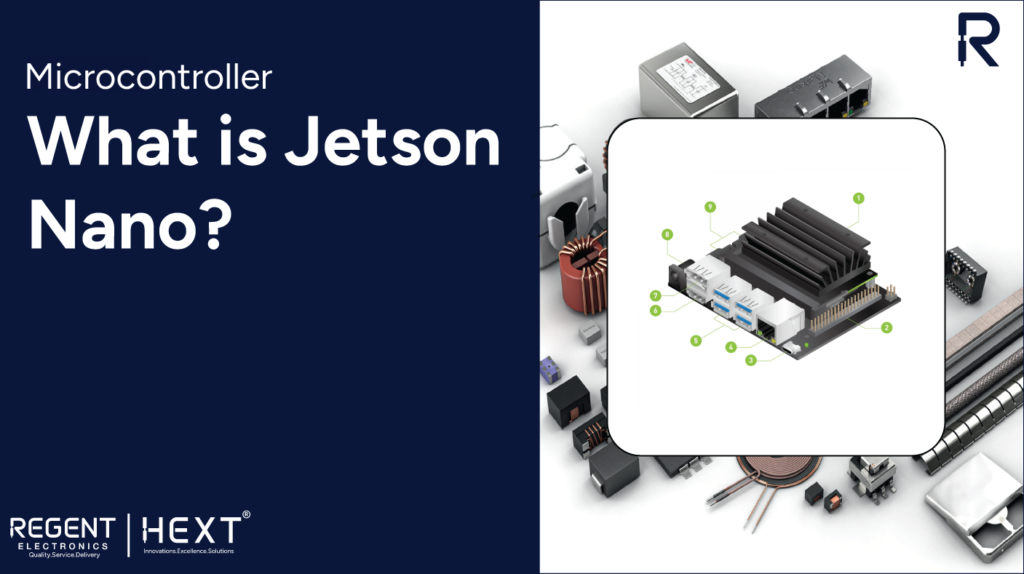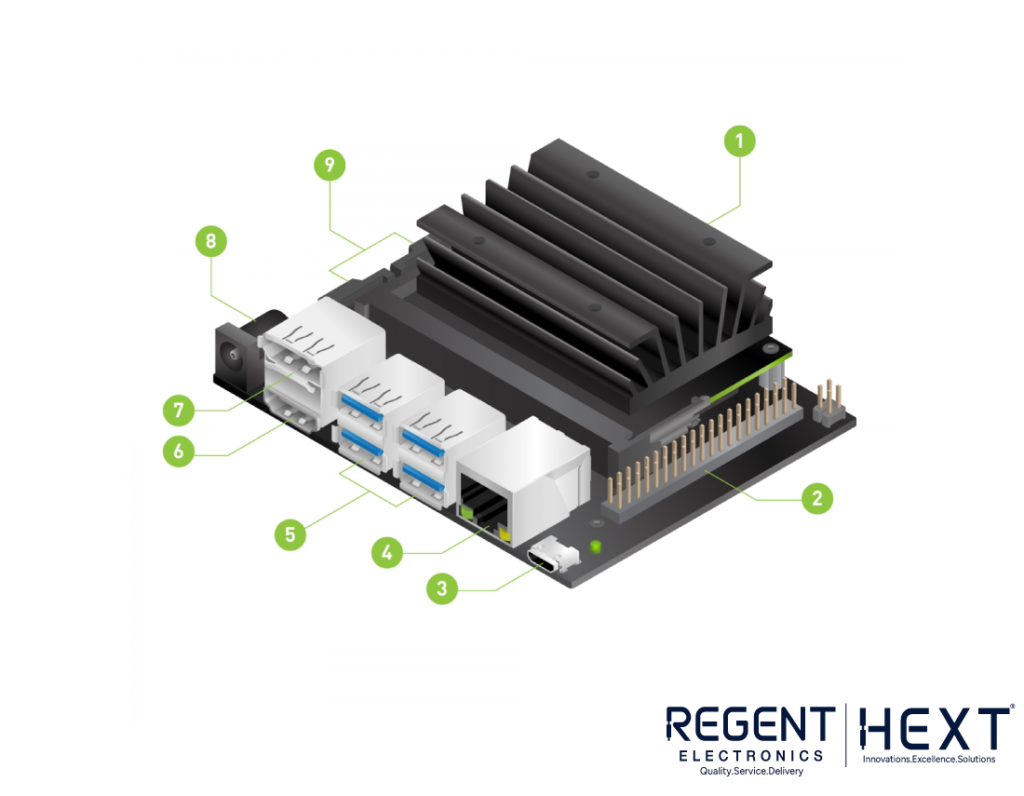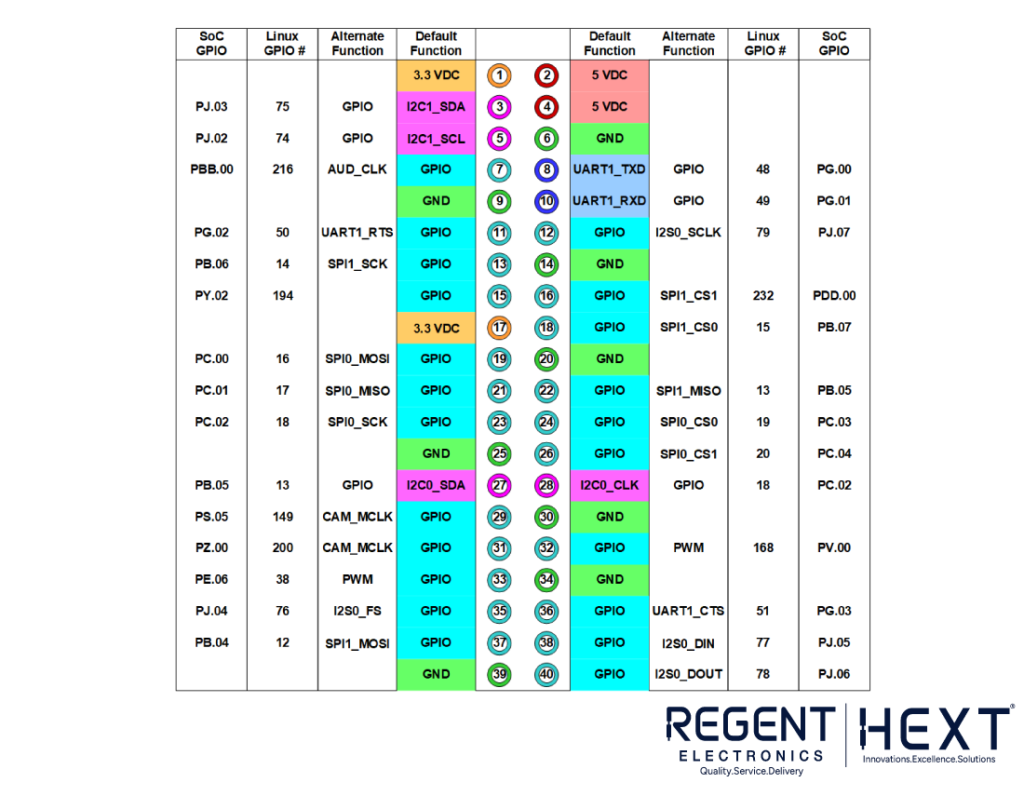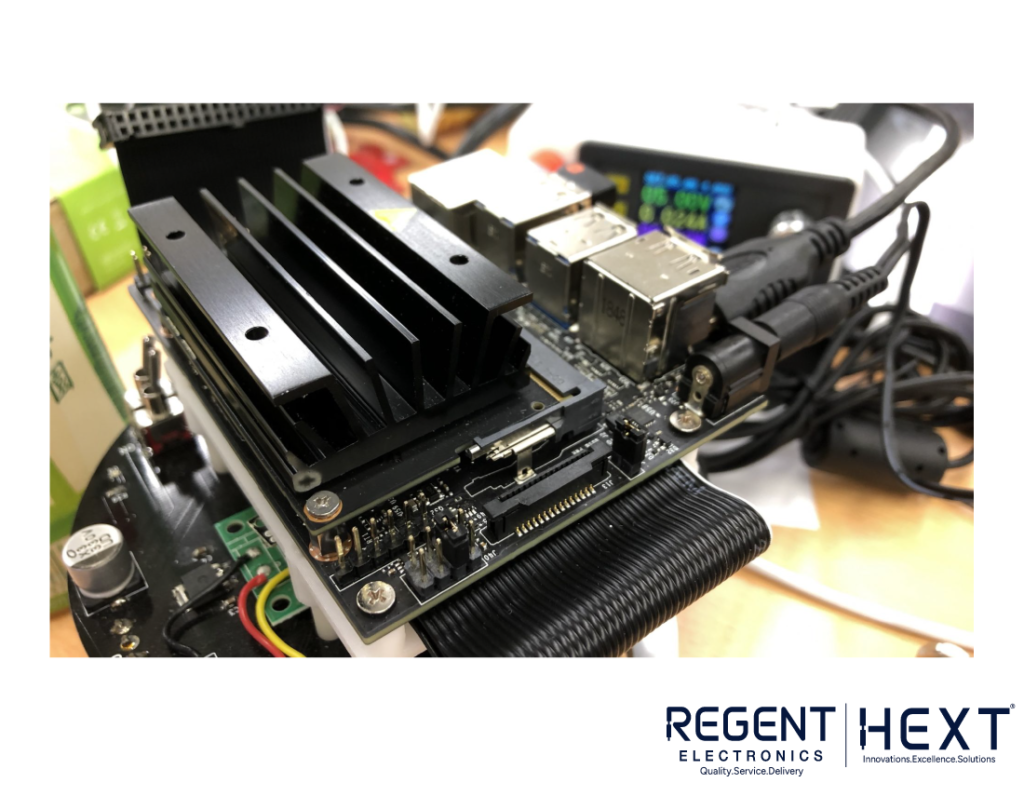
What is Jetson Nano?
Jetson Nano is a powerful yet compact AI development board that enables beginners, learners, and developers to explore artificial intelligence (AI) and machine learning (ML). In this blog, we will discuss the specifications, advantages, disadvantages, and applications of the Jetson Nano. We will also explore various areas where this board can be utilized.
Introduction
If you are interested in AI, you might have come across the term Jetson Nano. This single-board computer (SBC) is an excellent tool for AI-based applications. NVIDIA, a global leader in AI and GPU technologies, has designed the Jetson Nano to cater to AI and ML enthusiasts.
What’s Included in the NVIDIA Jetson Nano Package?
- Jetson Nano module with a reference carrier board
- QuickStart guide and support booklet
- 802.11ac wireless adapter with an extension cable
NVIDIA Jetson series development kits are specifically designed for enthusiasts and professionals who want to work in AI and ML. This blog will cover an introduction to the board, its advantages, disadvantages, and areas of application.
Overview of Jetson Nano

NVIDIA, headquartered in Santa Clara, California, is well-known for designing graphics processing units (GPUs) for gaming and professional markets. It has also developed integrated circuits used in gaming consoles and personal computers. Additionally, NVIDIA offers cloud gaming services through GeForce.
The Jetson Nano, launched in March 2019, is an affordable AI computing platform designed for hobbyists, students, and developers. It provides an excellent starting point for those entering the AI world. The Jetson Nano is powered by a 64-bit quad-core ARM Cortex-A57 CPU, running at 1.43 GHz. It features a Maxwell GPU with 128 CUDA cores, capable of delivering 472 GFLOPs (FP16).
Technical Specifications:
- CPU: Quad-core ARM Cortex-A57
- GPU: Maxwell GPU with 128 CUDA cores
- Memory: 4GB LPDDR4 RAM
- Storage: 16GB eMMC onboard storage
- Operating System: Linux for Tegra
I/O Ports:
- MicroSD card slot (for main storage)
- 40-pin expansion header
- Micro-USB port (5V power input or Device Mode)
- Gigabit Ethernet port
- USB 3.0 ports (x4)
- HDMI output port
- DisplayPort connector
- DC Barrel jack (5V power input)
- MIPI CSI-2 camera connectors
Network Connectivity
Although the Jetson Nano does not have built-in wireless connectivity, you can connect it to the internet using external adapters:
- Wired: The board includes an RJ45 Ethernet port for high-speed internet connectivity.
- Wi-Fi: A supported USB wireless networking adapter can be used for Wi-Fi connectivity.
- Bluetooth: You can add Bluetooth functionality by connecting a supported USB Bluetooth adapter.
Ethernet Port LED Indicators:
- Green LED: Indicates an active Gigabit connection. If off, the connection is slower than 1 Gbps or not active.
- Amber LED: Blinks when data is being transmitted.
Pinout and Power Modes
The Jetson Nano board features multiple communication protocols, including SPI, I2C, and UART.

Power Pins:
- The board supports two voltage levels (3.3V and 5V).
- The 5V pins can power the board, each capable of drawing up to 2.5A.
- Power Modes:
- 10W mode: Default mode for high performance.
- 5W mode: Recommended for energy efficiency.
Communication Pins:
- UART: Pins 8 and 10
- I2C: Pins 3 and 5, and Pins 27 and 28 (pulled up to 3.3V with 2.2kΩ resistors)
- SPI: Pins 16, 17, 18, and 19
- GPIO: All interface signal pins operate at 3.3V by default
Advantages of Jetson Nano
- Compact and Powerful: Ideal for AI applications with low power consumption.
- Developer-Friendly: Supports NVIDIA JetPack SDK for AI development.
- Extensive AI Capabilities: Compatible with NVIDIA’s entire GPU-accelerated software stack.
- Multiple I/O Peripherals: Enables expansion for AI projects.
- Large Community Support: Offers extensive tutorials and resources.
- Efficient Cooling: Features a large heatsink for better thermal management.
- AI at the Edge: Easy to create, deploy, and maintain AI applications.
- Cost-Effective: Offers an affordable entry point for AI enthusiasts.
- Scalable Platform: Reduces development costs and accelerates time to market.
Applications of Jetson Nano
Educational Use:
- Free AI courses and certification from NVIDIA
- Model training at an affordable cost
Robotics:
- Compatible with PyBullet simulation software
- Supports ROS (Robot Operating System)
- Works with RealSense depth cameras
- Optimized for AI-driven robotics applications
Disadvantages of Jetson Nano
While the Jetson Nano is a powerful AI development board, it does have a few limitations:
- No Built-in Wi-Fi or Bluetooth: Requires external adapters.
- Limited PWM Pins: Only two PWM pins are available.
- Higher Cost Compared to Raspberry Pi: The Raspberry Pi offers built-in Wi-Fi and Bluetooth at a lower price.

Conclusion
If you are looking for a cost-effective AI development board to build complex AI applications, the Jetson Nano Developer Kit is an excellent choice. With its powerful ARM Cortex processor and GPU acceleration, it is well-suited for AI and ML projects. This blog provided an introduction to Jetson Nano, its features, and applications. In the next part, we will cover how to set up and work with the board.
Have questions? Feel free to leave them in the comments section below!
